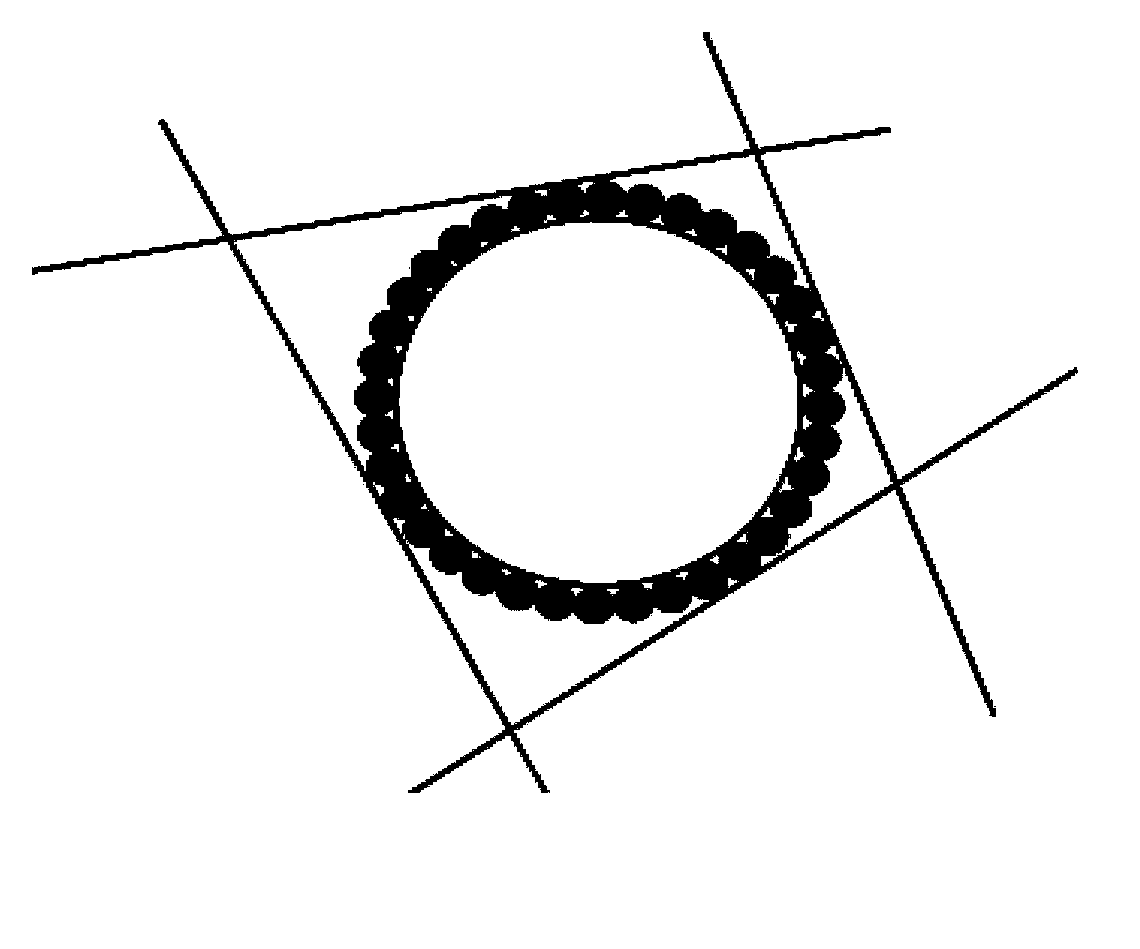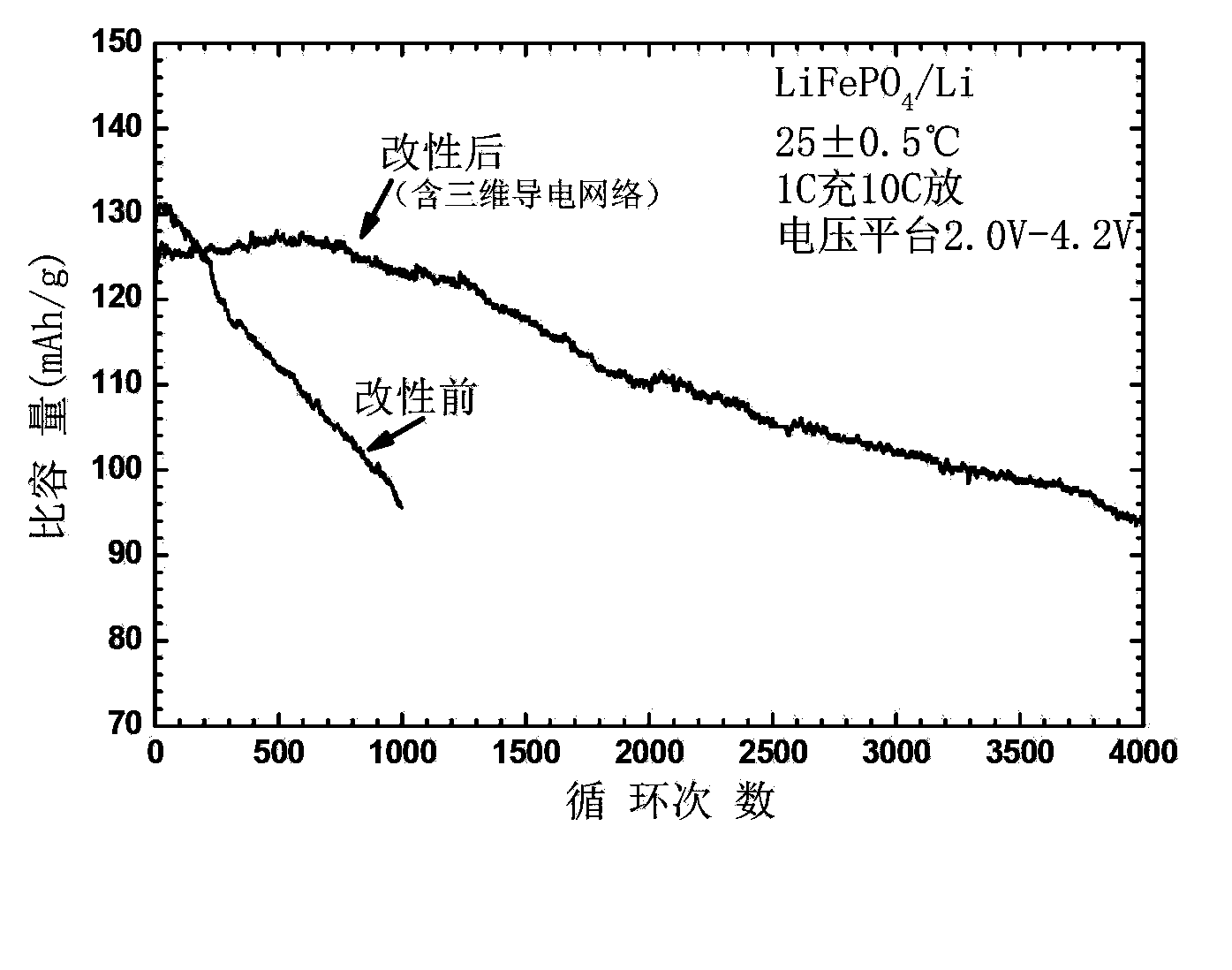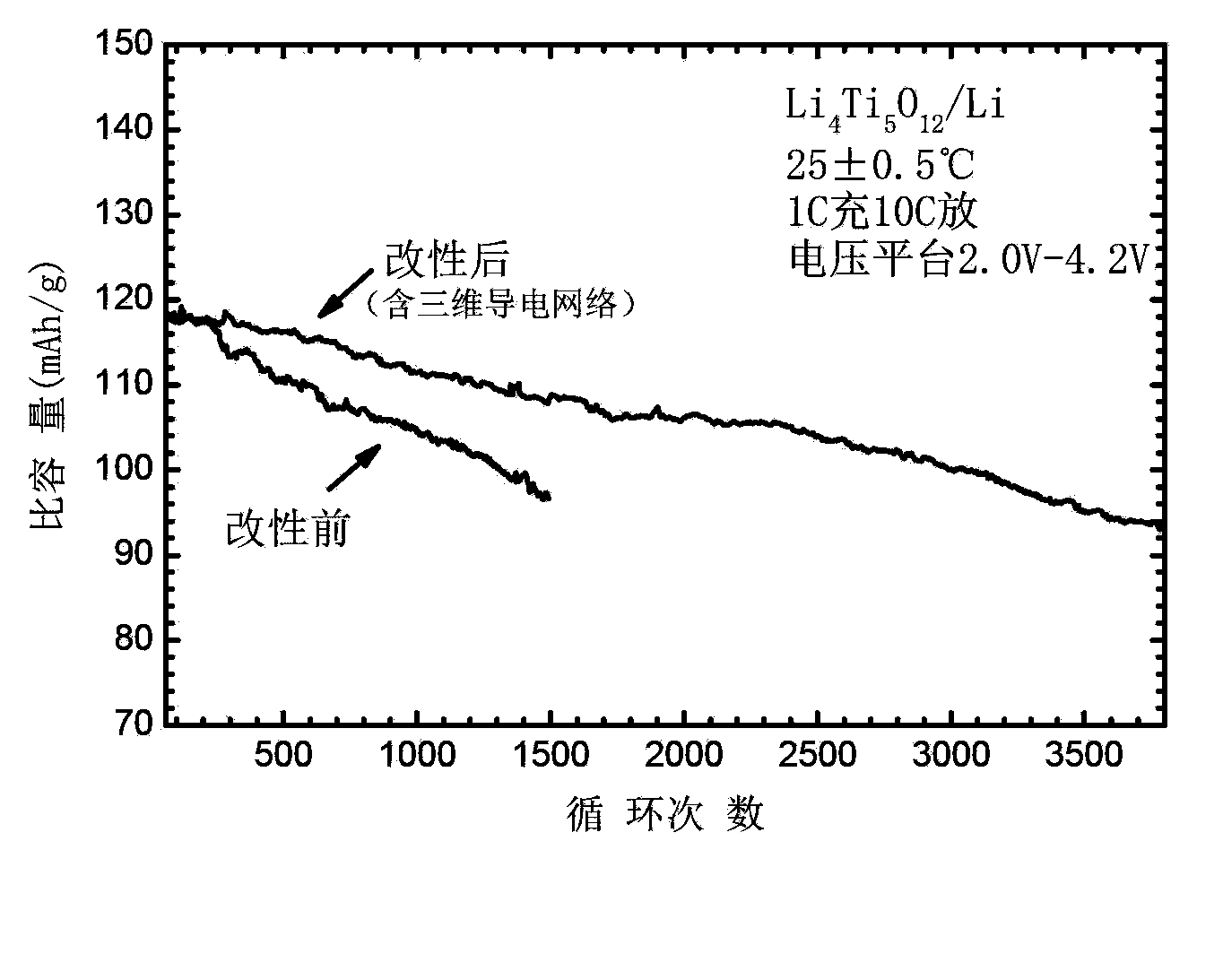Lithium ion battery nano composite positive-negative electrode material containing three-dimensional conductive network as well as preparation method thereof
A lithium-ion battery and conductive network technology, applied in battery electrodes, secondary batteries, circuits, etc., can solve the problems of high rate performance and poor cycle life
- Summary
- Abstract
- Description
- Claims
- Application Information
AI Technical Summary
Problems solved by technology
Method used
Image
Examples
Embodiment 1
[0037]Add 0.1 gram of surfactant to 100 ml of water to fully dissolve at room temperature, add 0.1 gram of silver nanowires to the solution, sonicate (1-10) hours, and stir (1-24) hours to obtain uniform and stable silver nanowire dispersion; then add zero-dimensional conductive nanomaterials (0.1-2) grams, water-soluble binders (0.1-1) grams, lithium iron phosphate / lithium titanate (7.5-9.5) grams in sequence, and ultrasonically (0.1 -10) hours, stirring for (0.1-10) hours, to obtain a lithium-ion battery nanocomposite material with a three-dimensional spatial conductive network.
Embodiment 2
[0039] Add 0.1 gram of surfactant to 100 ml of water to fully dissolve at room temperature, add 0.1 gram of silver nanorods to the solution, ultrasonically (1-10) hours, and stir (1-24) hours to obtain a uniform and stable silver nanorod dispersion; then add zero-dimensional conductive nanomaterials (0.1-2) grams, water-soluble binders (0.1-1) grams, lithium iron phosphate / lithium titanate (7.5-9.5) grams in sequence, and ultrasonically (0.1 -10) hours, stirring for (0.1-10) hours, to obtain a lithium-ion battery nanocomposite material with a three-dimensional spatial conductive network.
Embodiment 3
[0041] Add 0.1 gram of surfactant to 100 ml of water to fully dissolve at room temperature, add 0.1 gram of copper nanowires to the solution, sonicate (1-10) hours, and stir (1-24) hours to obtain uniform and stable copper nanowire dispersion; then add zero-dimensional conductive nanomaterials (0.1-2) grams, water-soluble binders (0.1-1) grams, lithium iron phosphate / lithium titanate (7.5-9.5) grams in sequence, and ultrasonically (0.1 -10) hours, stirring for (0.1-10) hours, to obtain a lithium-ion battery nanocomposite material with a three-dimensional spatial conductive network.
PUM
 Login to View More
Login to View More Abstract
Description
Claims
Application Information
 Login to View More
Login to View More - R&D
- Intellectual Property
- Life Sciences
- Materials
- Tech Scout
- Unparalleled Data Quality
- Higher Quality Content
- 60% Fewer Hallucinations
Browse by: Latest US Patents, China's latest patents, Technical Efficacy Thesaurus, Application Domain, Technology Topic, Popular Technical Reports.
© 2025 PatSnap. All rights reserved.Legal|Privacy policy|Modern Slavery Act Transparency Statement|Sitemap|About US| Contact US: help@patsnap.com



